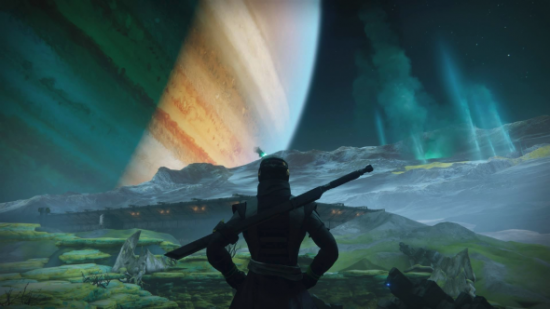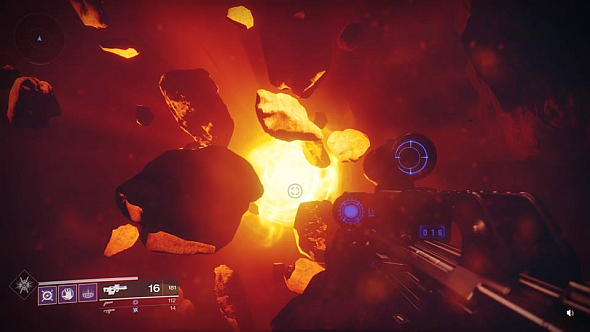After three years of the original being one of the biggest and most-discussed games on the planet, Destiny 2 has few excuses to make the same mistakes twice. Bungie want us all to know they’ve listened: their own assurances on that point are nothing next to the campaign’s bombastic opening mission, Homecoming, which I’d played no fewer than seven times before the game’s console launch last week (at E3, and during two betas on three characters each).
Curious to see what came next, I picked up the console version. Forty-two hours later – not all of which was active gameplay, it must be said – here’s what I think.
Here’s everything we know about Destiny 2 so far.
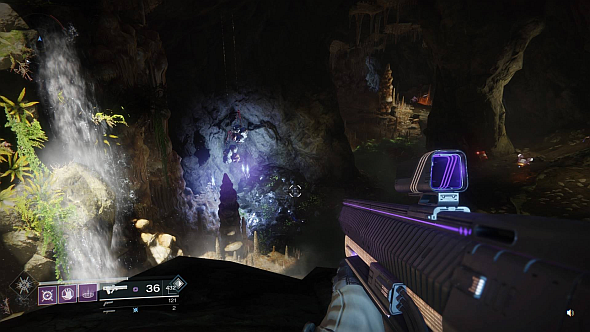
Let’s start with the story. Compared to the awful missions of the original, Homecoming is a blessed relief. It varies its pacing with friendly NPCs and a standoff in the Tower plaza in which you’re seamlessly matched with other players. It raises hopes that the rest of the campaign will be as good, and the visually stunning follow-up mission, as your depowered Guardian flees an alien attack, maintains those hopes (even if it occasionally hits melodrama when shooting for poignancy).
Sadly, the middle half of the campaign slumps. You never again share the battlefield with friendly NPCs, difficulty is mostly trivial, enemy AI mostly simplistic. The original’s bad habits return: more running from A to B, more wave defence, more picking this up and putting it over here, then doing the same thing again twice more. It’s great that lots of cutscenes and voiceover give these rote actions a narrative context – honestly, this is a welcome improvement – but the spell they weave can’t help but unravel when the tasks themselves are so repetitive.
One step forward, one step nowhere
In fairness, I’m starting to think that some of this superficiality in your interactions with the world is a limitation of the MMO genre that games as a whole may never overcome. Guild Wars 2 and World of Warcraft – last time I played, anyway – suffer from similar problems. Everything needs to be replayable, the environment can never be allowed to change substantially, enemies need to respawn continually, and they need to act in a more open context than the corridors of COD, which must limit their behaviour. I can see Bungie are trying: the addition of Heroic mode in public events gives an important feeling of agency, in that you can try to pursue a tougher secondary objective for better loot.
Nonetheless, Destiny 2’s gameplay is at its best when it’s not in the static open world. The campaign’s opening and climactic missions are examples of this, and the highlight of the single-player content. Without spoiling anything, the final two missions are just jaw-dropping. I wish I could say more about the penultimate level, in particular, because it’s one of my favourite sci-fi settings ever.
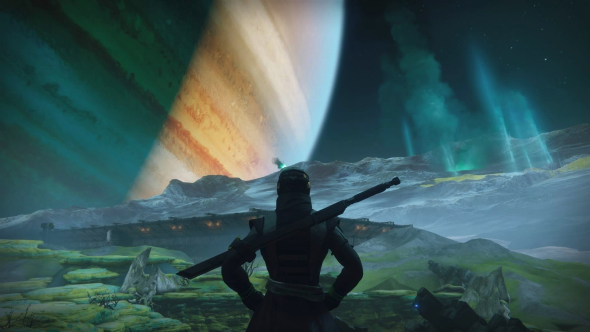
Elsewhere, though, the campaign only stays engaging because of the environments (and a couple of dumbly fun tank missions). Here, Bungie’s artists have excelled themselves: Titan is a tangle of oceanic rigs in a stormy sea, concealing alien nests and cities that hint mournfully at lost grandeur. Io is a lonely, sulfur-stained expanse of mesas and canyons, choked by fossils and tree roots, its horizon dominated by the colossus of Jupiter. Nessus might be my favourite: a lovely contrast of white waterfalls and red grass, set against jarringly angular, sculpted cliffs. Having explored these places on console, they are yet another argument for getting this game on PC, where they’ll look their best.
And thanks to Bungie’s integration of story missions, public events, and isolated adventures within the open world, we can play in these environments for hours without any jarring load screens. This might be the most important of many quality-of-life changes the sequel has received, and it’s thoroughly welcome.
My only complaint in this department is that authoritative leaks from Kotaku and industry tipster Shinobi had led me to expect more. While it’s technically true that you can encounter friendly NPCs in the world, they take the form of a single, static overseer on each planet. Though a little clichéd, they’re fun to spend time with – Failsafe in particular is a delight – but there’s no stumbling on AI Guardians in the wild, no integration of social spaces with the rest of the environment, even though the Farm is meant to be a part of the EDZ. This feels like something Bungie wanted to do, but somehow couldn’t.
Endgame
As with the original, if you want a challenge, you’ll find it long after the campaign is done. I’m excited to be among the first into the raid, but until then, the Nightfall strike is my highlight so far. When the original launched, Bungie seemed to have confused ‘challenge the player’ with ‘make enemies stronger’, creating overpowered but just as dumb bullet sponges that were as fun to fight as sculpting ice by headbutting it.
The sponginess hasn’t entirely vanished, but this week’s prism modifier gave us the power to overcome it: the game’s three elements are cycled, and you can deal huge damage if you attack with the active one. After chipping slowly away at the boss, waiting on tenterhooks for the Void phase to kick in, the feeling of pasting the git with a Nova Bomb and seeing a whole chunk of his health vanish is immensely satisfying, and the elation after bringing him down is Souls-esque.
Finally, PvP has been another positive experience, partly because of some sensible changes from the original, partly because matchmaking hasn’t found my true skill level yet and I’ve been “going off” in every other match (I’m sure this will change in due course). Where grenades, Supers, and overpowered secondary weapons scuppered the original’s potential, adjustments to weapon categories and ability cooldowns have created a far more balanced, skilful game this time.
Slowed just a tad from its predecessor, I now really like Destiny 2’s pacing, which is like nothing else on PC: it’s not a mindless killfest like COD, nor an old-school arena shooter like Doom or Quake. The headshot bias is meaningful, but not decisive, as in CS:GO. Class synergies will give you an edge, but the game isn’t entirely built around them, as in Overwatch. I could talk much more about PvP, but that’s for the review. Suffice it to say that if you enjoy competitive multiplayer, Destiny 2 has something to offer, despite the baffling lack of dedicated servers. On a performance note, uncapped frame rate is another reason to get it on PC.
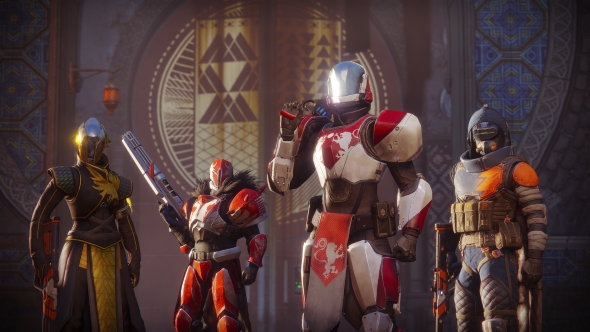
Being a Destiny player has always been a frustrating experience. It’s hard to see such potential being so unevenly fulfilled; when the original launched, its only flash of brilliance was its raid. Its first expansion, The Taken King, shone a little more often. Destiny 2 is brighter again, but Bungiestill haven’t fully polished some of its duller parts. They and Activision are also playing fast and loose with the community’s goodwill with recent changes to shaders and microtransactions, which do leave a bad taste in the mouth.
If you played the original on console and enjoyed it, you’ve nothing to fear – you’ll love Destiny 2, and PC should be a great place to play it, based on the strength of the beta and the importance of graphics in its appeal. If you’re undecided, know that you’ll need to tolerate a lengthy grind, and to dedicate a lot of free time to a new hobby game, in order to get to the good stuff.
If that’s you, then Destiny 2 is worth your continued interest. We’ll have a fuller verdict around its PC launch on October 24.
